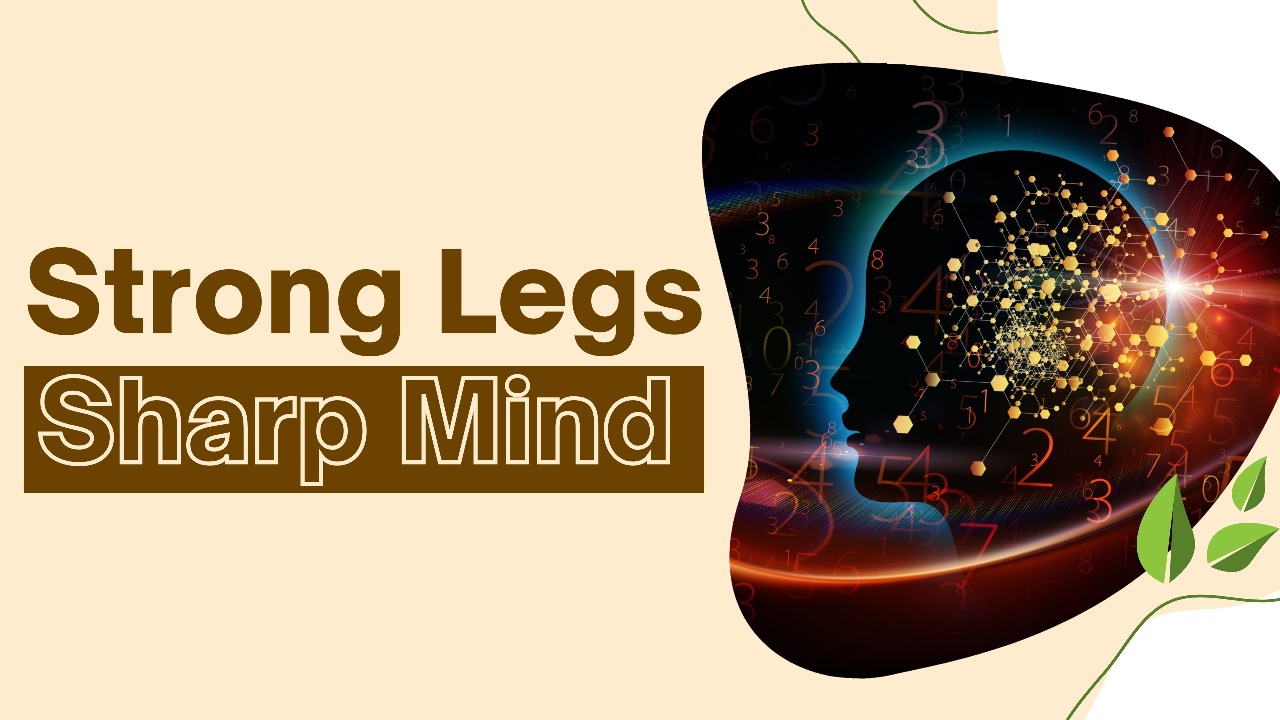Forget Brain Games! – Start with Your Legs!
For years, brain health advice has focused on crossword puzzles, sudoku, and memory apps. But a groundbreaking 10-year twin study from King’s College London suggests your best cognitive investment might be in your lower limbs!.
The Study That Flipped the Script!
In a study published in Gerontology, researchers followed 324 healthy older female twins, measuring their leg muscle power using a specialized device called the Nottingham Power Rig. A decade later, the women with stronger legs at baseline showed significantly less cognitive decline than their weaker-legged counterparts – even after adjusting for:
Genetics & early-life environment
Education & socioeconomic status
Cardiovascular health & lifestyle habits
Brains and Legs: The Surprising Connection!
When researchers looked at identical twins with different leg power levels, they found:
More grey matter in the stronger twin’s brain 12 years later
Smaller ventricular volume (a sign of less brain atrophy)
Stronger activation in brain regions controlling movement and coordination during MRI tasks
Why Legs Matter More Than You Think!
Your legs aren’t just for getting from point A to point B — they are metabolic powerhouses that:
Boost blood circulation to the brain
Support hormonal and neurotrophic signaling (BDNF, IGF-1)
Maintain balance and functional independence
Engage neural pathways linked to reaction speed and coordination
> Quote from the research team: “Leg power predicts both cognitive ageing and global brain structure, despite controlling for common genetics and early life environment.”
Leg Power vs. Physical Activity: What’s the Difference?
While self-reported physical activity also correlated with better cognition, it was leg power — the ability to push with speed and strength – that had the stronger and more consistent effect.
( Walking is good. Squats, lunges, and resistance training for your legs might be great.)
Practical Takeaways for a Brain-Healthy Future
- Train for power, not just endurance – Include exercises like step-ups, jump squats (or low-impact versions), and resistance band leg presses.
- Start in midlife – The women in this study were aged 43–73 at baseline. Earlier investment = better returns.
- Think functional – Focus on movements that mimic daily tasks, such as climbing stairs or rising from a chair quickly.
- Progress gradually – Build both strength and speed in a safe, structured way.
The Big Picture
This isn’t about becoming a sprinter in your 60s – it’s about harnessing the muscle–brain connection to protect your mind for years to come. The research suggests that lower limb power is more than a fitness measure – it’s a window into brain health.
Call to Action for Readers
Before you dive into your next brain-training app, consider this: Stand up. Do 10 strong squats. Your brain may thank you in a decade!
Reference:
Steves CJ, Mehta MM, Jackson SHD, Spector TD. Kicking Back Cognitive Ageing: Leg Power Predicts Cognitive Ageing after Ten Years in Older Female Twins. Gerontology. 2016;62:138–149.
Written by -Dr Sathyachandran K


